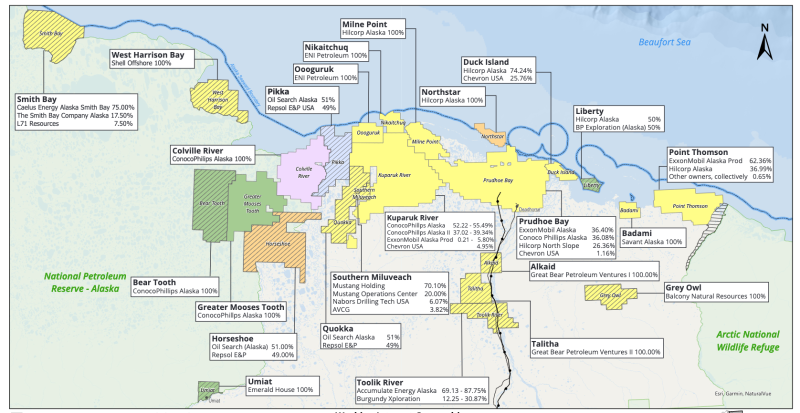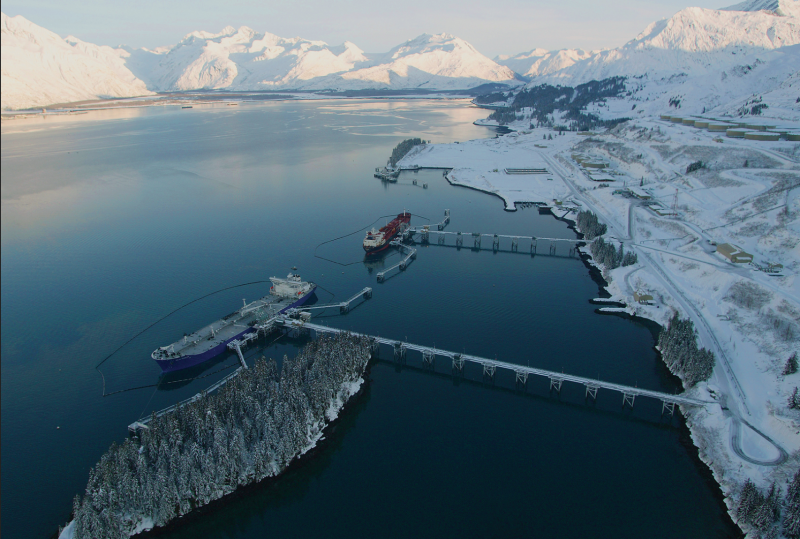Eni has agreed to sell its Beaufort Sea, shallow-water Nikaitchuq and Oooguruk oil fields on Alaska’s North Slope to Texas-based independent Hilcorp.
As owner and operator of the assets, the Italian major is currently positioned as the North Slope’s largest offshore oil producer, according to an economic impact report by McKinley Research Group in November 2023 for the Alaska Oil and Gas Association.
Eni operates the Nikaitchuq and Oooguruk fields from manmade gravel islands in state waters, producing about 22,000 B/D.
In announcing the signing of the binding agreement on 27 June, Eni noted that the sale is consistent with the company’s strategy of rebalancing its portfolio by divesting nonstrategic assets.
The value of the transaction will be announced upon closing, Eni reported, noting that the deal must first obtain state regulatory approvals.
In a statement quoted in the Alaska Beacon, Greg Lalicker, Hilcorp’s CEO, said the company will “draw from our extensive experience and expertise gained at Milne Point and Prudhoe Bay … to drive success at Oooguruk and Nikaitchuq.”
Known as specialists in enhanced oil recovery, Hilcorp reported in 2020 that it had nearly tripled heavy oil production at Milne Point after it employed a new polymerflooding technology in partnership with the US Department of Energy and the University of Alaska Fairbanks.
In May 2023, the partners in the project presented SPE 212973 at the SPE Western Regional Meeting in Anchorage detailing the results of the first application of the technology on Alaska’s North Slope.
Hilcorp plans to apply what it pioneered at Milne Point to boost production at the two mature offshore fields it is acquiring from Eni, according to a company statement.
Hilcorp is already Alaska’s biggest oilfield operator and the state’s second-largest oil producer, with net production of about 135,000 B/D.
ConocoPhillips remains the largest oil producer and leaseholder, claiming net production in Alaska of about 195,000 B/D in 2023, as published on its website.

Hilcorp entered the Alaskan oil fields in 2011 with the purchase of Cook Inlet assets from Chevron and Marathon. Today, it controls 90% of Cook Inlet leases and production.
In 2014, Hilcorp expanded to the North Slope after acquiring BP’s shares and operator responsibilities in the Endicott and Northstar fields along with Milne Point and the Liberty field.
In 2020, the independent bought out all of BP Alaska’s remaining assets in a $5.6-billion deal that gave Hilcorp operator status over the Prudhoe Bay field and its satellites, the largest oil field in North America.
Eni began exploration drilling in the Beaufort Sea in 2017, operating from an artificial island 3 miles offshore Oliktok Point and using extended-reach techniques to target a formation on the Outer Continental Shelf, according to the US Bureau of Safety and Environmental Enforcement which approved Eni’s drilling application at the time.
While the US has allowed oil and gas activity offshore in its part of the Beaufort Sea, on 19 April the Bureau of Land Management finalized the Management and Protection of the National Petroleum Reserve in Alaska (NPR-A) rule aimed at protecting significant resource values on the more than 13 million acres of Special Areas in the western Arctic.
Recent actions by the US Department of the Interior affecting millions of acres in the Alaskan Arctic include withdrawing approximately 2.8 million acres of the Beaufort Sea. This ensures that the entire the US Arctic Ocean would be off limits to new oil and gas leasing.
Canada, which shares the Beaufort Sea with the US, declared a moratorium on licensing in the Arctic in 2016 that remains in effect today.
For Further Reading
SPE 212973 The Success Story of First-Ever Polymer Flood Field Pilot To Enhance the Recovery of Heavy Oils on Alaska's North Slope by A. Dandekar, B. Sheets, and Y. Zhang, University of Alaska Fairbanks et. al.
2022 Economic Impact Report: The Role of the Oil & Gas Industry in Alaska’s Economy, McKinley Research Group.


